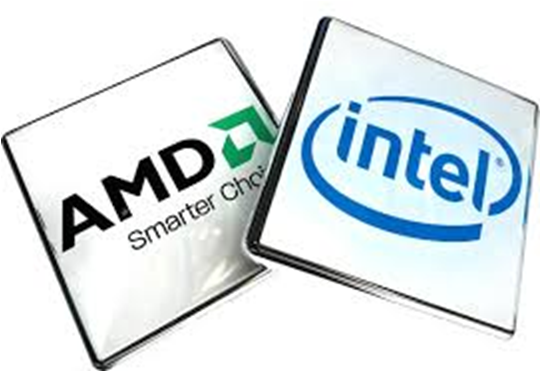The Processor (CPU)
The processor, or CPU (Central Processing Unit), is the brain of the computer.
It executes instructions, performs calculations, and processes all data.

🔢 Units of Measurement
In computing, we use metric prefixes to express scale:
-
Kilo (K): 10³ = 1,000
-
Mega (M): 10⁶ = 1 million
-
Giga (G): 10⁹ = 1 billion
-
Tera (T): 10¹² = 1 trillion
⏱️ Processor Frequency
The frequency of a processor indicates how many cycles it can perform per second:
-
1 Hz = 1 cycle per second
-
1 MHz = 1 million cycles per second
-
1 GHz = 1 billion cycles per second
A higher frequency generally means faster processing capability.
📈 Evolution of Processors
-
Pentium I, II, III, IV
Each new generation brought improvements in clock speed and cache memory, increasing overall performance. -
Dual Core / Core2Duo
These are processors with two physical cores.
The Core2Duo has larger cache memory than the standard Dual Core, making it more efficient.
💻 Intel Core Family: i3, i5, i7, i9
Intel’s processor line evolved to include more cores, cache, and higher frequency:
-
Core i3: 2 or 4 cores
-
Core i5: 2 or 4 cores
-
Core i7: 4 cores with Hyper-Threading (works like 8 logical cores)
-
Core i9: Up to 8, 10, or even 16 cores for high-performance tasks like gaming, video editing, or AI.
🔄 What is Hyper-Threading?
Hyper-Threading is Intel’s multitasking technology.
It allows one physical core to function as two virtual (logical) processors.
-
Both virtual processors share resources (registers, cache, system bus).
-
The processor can run multiple tasks in parallel, making better use of available power.
This leads to faster performance, especially in environments where multiple applications are running at once.
